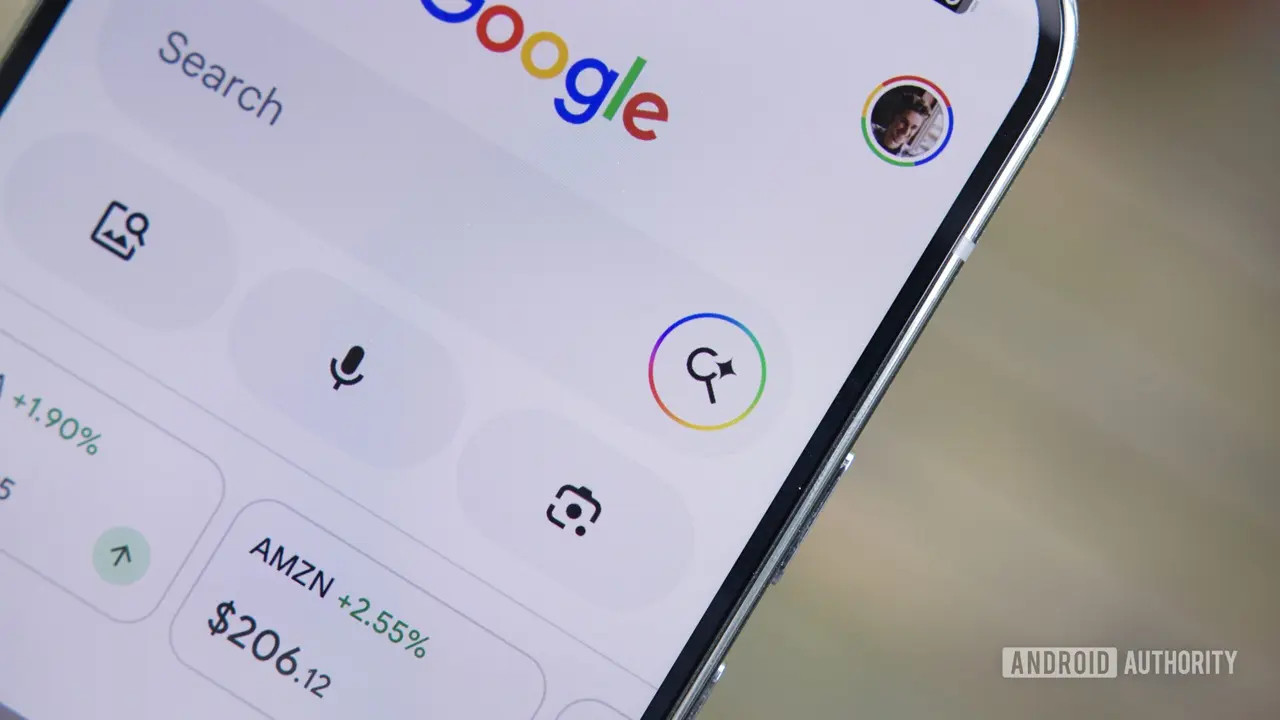Chrome Tests AI-Powered Search Shortcuts with 'Nano Banana' and 'Deep Search' Buttons
2 Sources
2 Sources
[1]
Chrome's latest experiment could change how you start a search
The features are unstable and do little right now, but they signal Google's push to make Chrome more AI-driven. Google Chrome is testing two bold new buttons under its search box: Nano Banana and Deep Search. First spotted by Windows Report, the update appears in the Chrome Canary test build and looks like another step toward making Chrome a more AI-forward browser. These new chips sit just below the "Ask Google" field on a new tab page, alongside the existing AI Mode button that was added earlier this year. Nano Banana and Deep Search seem to build on that ambition. Clicking Nano Banana automatically drops the prompt "Create an image of..." into the search box, signaling a direct shortcut into Google's image-generation workflow. Deep Search, meanwhile, inserts "Help me research...", hinting at a Gemini-powered mode designed for more complex, exploratory queries. If these features roll out broadly, Chrome's search box may evolve from a simple URL bar into something closer to a creative command center. To try these options today, you'll need to enable hidden flags at chrome://flags and relaunch the browser. Even then, Canary can be unstable as clicking either chip may crash the browser or simply do nothing. Nano Banana and Deep Search are clearly not ready for everyday use just yet. Still, when they do respond, they give a clear picture of Google's direction. The company wants Chrome to do more than open links. Instead, it wants the browser to help you generate images, dig deeper into research, and surface structured answers from the jump. This push shows Google's growing determination to create new Chrome features to compete with AI-first browsers like Comet, Dia, and the recently launched Atlas by OpenAI. If you want to experiment, enable the #ntp-next-features flag to make the chips appear. However, it's worth noting that we also had more consistent results when enabling #ntp-composebox and #ntp-realbox-next. After that, relaunch Chrome Canary and open a new tab to see the additions. Google hasn't shared a timeline for wider availability, but given how visually prominent these chips are in Canary, it seems likely they're being prepped for a broader rollout. Just remember: Canary build gets daily updates, so what's broken today could be fixed tomorrow. That said, we still wouldn't recommend using it for your daily web browsing.
[2]
Chrome tests "Nano Banana" and "Deep Search" AI buttons
The new buttons appear to be shortcuts for specific AI prompts. Clicking "Nano Banana" automatically inserts the text "Create an image of..." into the search box, suggesting a direct integration with Google's image generation tools. Google Chrome is testing new AI-powered search functions in its experimental Canary build, signaling a potential shift in how users begin browsing. The test, first spotted by Windows Report, introduces two new buttons, or "chips," just below the main search bar on the new tab page, labeled "Nano Banana" and "Deep Search." These new options sit alongside the "AI Mode" button that was added earlier this year. The new buttons appear to be shortcuts for specific AI prompts. Clicking "Nano Banana" automatically inserts the text "Create an image of..." into the search box, suggesting a direct integration with Google's image generation tools. Similarly, the "Deep Search" button populates the bar with "Help me research...," hinting at a more complex, Gemini-powered research function. This move suggests Google is steering Chrome's search box to evolve from a simple URL bar into a creative command center. The features are still in a highly experimental and unstable phase. Users in the Canary build report that clicking the buttons can crash the browser or do nothing at all. To enable them, users must activate several hidden flags, including , in the menu. This development is seen as part of Google's broader strategy to compete with a new wave of AI-first browsers like Comet, Dia, and the recently launched Atlas by OpenAI. Google has not provided a timeline for a wider public rollout.
Share
Share
Copy Link
Google Chrome is experimenting with two new AI-powered search shortcuts in its Canary build, featuring 'Nano Banana' for image generation and 'Deep Search' for research assistance, as the company pushes to make Chrome more AI-driven.
Chrome's AI Evolution Takes Shape
Google Chrome is taking a significant step toward becoming an AI-first browser with the introduction of two experimental search shortcuts currently being tested in its Canary build. The new features, dubbed "Nano Banana" and "Deep Search," represent Google's latest effort to transform Chrome's traditional search functionality into something more akin to a creative command center
1
.First spotted by Windows Report, these new buttons appear as clickable "chips" positioned directly below the main search box on Chrome's new tab page. They join the existing "AI Mode" button that was introduced earlier this year, creating a growing collection of AI-powered tools within the browser's interface
2
.Functionality and User Experience
The two new shortcuts serve distinct purposes in Google's AI ecosystem. Clicking the "Nano Banana" button automatically populates the search box with the prompt "Create an image of...," providing users with a direct pathway to Google's image generation capabilities. Meanwhile, the "Deep Search" button inserts "Help me research..." into the search field, suggesting integration with Gemini-powered research functions designed for more complex, exploratory queries
1
.This approach signals Google's intention to evolve Chrome's search box beyond its traditional role as a simple URL bar. Instead, the company appears to be positioning it as a comprehensive creative and research tool that can handle various AI-powered tasks from the moment users open a new tab
2
.Technical Implementation and Limitations
Currently, these features exist in a highly experimental state within Chrome Canary, Google's most unstable testing environment. Users attempting to access the functionality must manually enable several hidden flags through the chrome://flags menu, including #ntp-next-features, #ntp-composebox, and #ntp-realbox-next, followed by a browser relaunch
1
.The experimental nature of these features is evident in their current performance. Users report that clicking either button frequently results in browser crashes or complete non-responsiveness. Even when the buttons do function as intended, their integration with Google's AI services remains inconsistent and unreliable
2
.Related Stories
Strategic Competitive Response
Google's development of these AI-powered search shortcuts appears to be a direct response to the emergence of AI-first browsers that are challenging Chrome's market dominance. Competitors like Comet, Dia, and OpenAI's recently launched Atlas browser are positioning themselves as next-generation browsing solutions built around AI capabilities from the ground up
1
.This competitive pressure has prompted Google to accelerate its integration of AI features into Chrome, moving beyond simple search enhancements to create tools that fundamentally change how users interact with the web. The company's strategy involves transforming Chrome from a passive browsing tool into an active AI assistant capable of generating content and conducting research
2
.References
Summarized by
Navi
[1]
[2]
Related Stories
Google Chrome becomes an AI browser with Gemini integration and native AI Mode in address bar
10 Dec 2025•Technology

Google Chrome's New Tab Page to Feature AI Mode Shortcut, Signaling Deeper AI Integration
15 Jul 2025•Technology

Google Expands AI Mode Integration Across Chrome and Search Platforms
12 Jun 2025•Technology

Recent Highlights
1
Google launches Gemini 3 Flash as default AI model, delivering speed with Pro-grade reasoning
Technology

2
OpenAI launches GPT Image 1.5 as AI image generator war with Google intensifies
Technology

3
OpenAI launches ChatGPT app store, opening doors for third-party developers to build AI-powered apps
Technology





